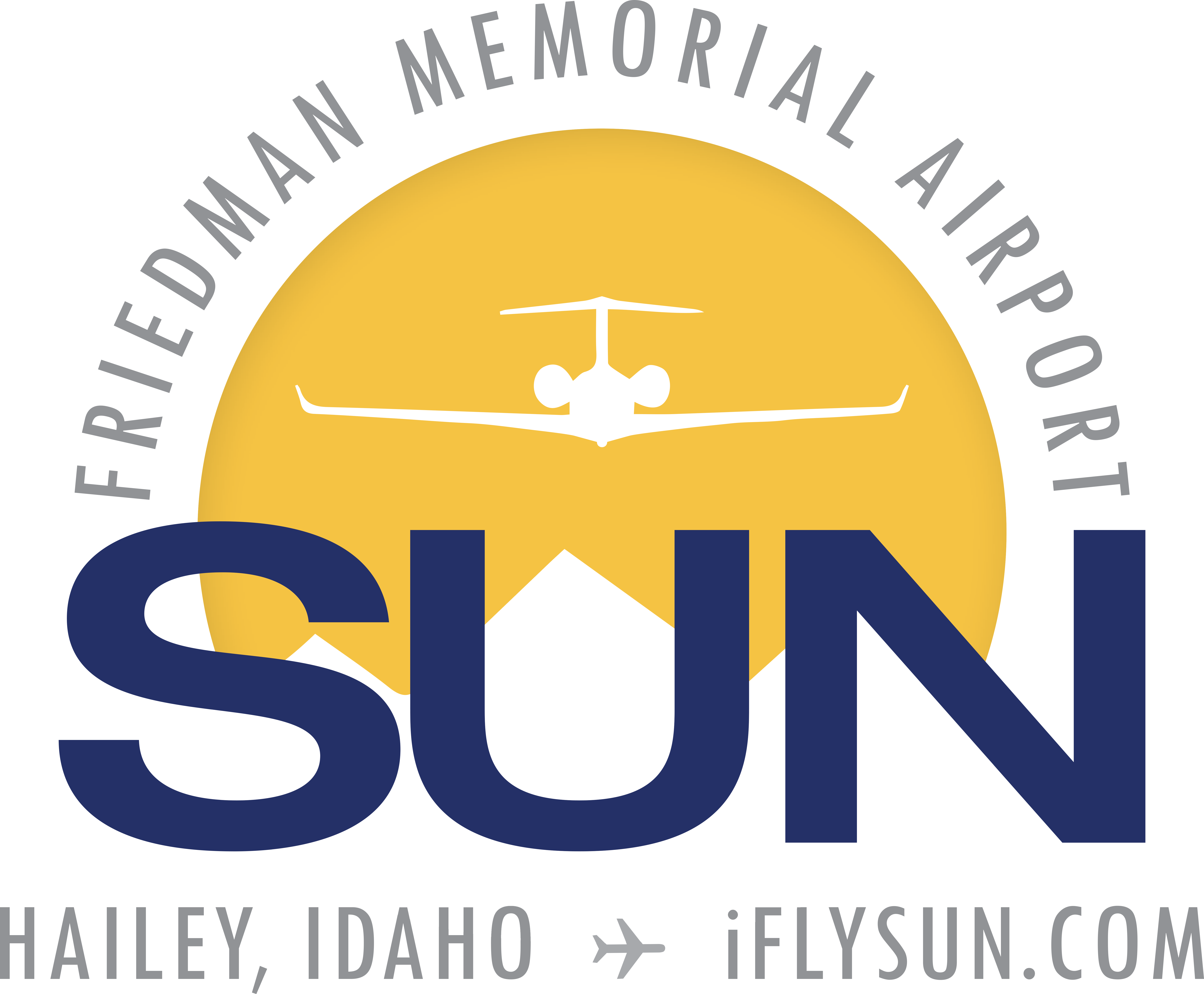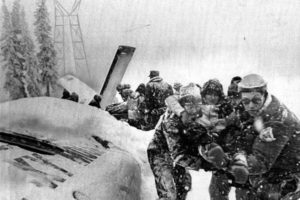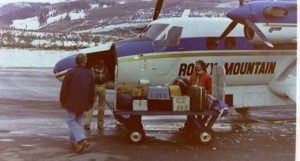On a recent bluebird afternoon, we caught up with Dave, a local pilot and a part-time Wood River Valley resident. Because he loves to travel—dividing his time between Sun Valley and Gig Harbor, Washington—we were lucky enough to catch him. His remarkable story, which took place almost 40 years ago, is one we will never forget.
 The year is 1978. The month, December. Rocky Mountain Airways Flight 217 crashes near Steamboat Springs. Dave is one of the first responders to the scene.
The year is 1978. The month, December. Rocky Mountain Airways Flight 217 crashes near Steamboat Springs. Dave is one of the first responders to the scene.
But before we dive into his story, let’s start from the beginning. Originally from Minneapolis, Dave grew up an avid ski jumper. Following his snow-filled passion, he moved to Colorado to attend the University of Denver. While in college, skiing became his lifeline. Fortunately, he traveled to world-renowned slopes with his college ski team—Steamboat Springs, Sun Valley, and Jackson Hole among them. When the time came to plant his roots, he ultimately chose Steamboat. The area’s breathtaking views and incredible ski jumping facilities had him hooked.
Dave wore many hats during his years in Steamboat—he started the famous Ore House restaurant, helped develop a subdivision, managed the FBO at the airport (and built many hangars there), ran an air ambulance and air charter service, and served on the city council. He also traveled frequently to Sun Valley; he spent his time visiting and skiing with life-long friends.
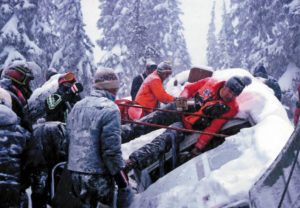
Back in Steamboat, while he was developing a subdivision north of the city, he purchased a snowcat—mostly because the road to the subdivision wasn’t quite finished. He didn’t know it then, but this snowcat proved valuable in many respects. It allowed him to pioneer snowcat skiing with his buddies on Buffalo Pass, and ultimately, enabled him to play a critical role in the rescue of Flight 217.
When he first heard about the crash, Dave was working at his restaurant in Steamboat. He’ll never forget as the news flashed across the television screen. In a gut-wrenching, compulsory moment, he left Ore House and walked into the sheriff’s office. He knew, without a doubt in his mind, that he could help. He told the deputies about his snowcat and explained where the crash might be. However, its precise location was uncertain. At the time, conflicting signals were making it difficult to pinpoint the plane’s whereabouts. But, a power line transmitter over Buffalo Pass had gone down at roughly the same time as the crash. To Dave, that was no coincidence.
With their grace, Dave left the sheriff’s office and headed toward Walden. But, he took a wrong turn in the dark. He began moving swiftly to the east side of the Buffalo Pass, instead. However, he continued to listen to his intuition, letting it guide him across the treacherous landscape. On the way, he stumbled upon two other civilian searchers who had radios and direction-finding tools. Together, they maneuvered to the top of the pass, where they anxiously encountered nearly 100 mph winds. In addition to the winds, the downed power line transmitter made their search extremely challenging
After nearly two-and-a-half hours of fruitless searching, the two civilians were ready to give up. But, Dave followed his gut. He drove his snowcat toward the power lines, up to the top of the dangerous, snow-covered ridge. As they approached, their directional tool began blaring loudly. They knew they were close. Minutes later, Dave heard someone call out “over here!” They drove another 500 feet before they saw anything. But, there it was—the plane, still somewhat intact, and a group of hopeful passengers.
According to Dave, the crash went something like this: one of the wingtips clipped the power line on the ridge, and the plane went down in a timber-lined area, losing both wings in the crash. Once Dave and the other two searchers assessed the scene, they radioed down their location. Unfortunately, though, the other snowcats weren’t able to see Dave’s tracks due to the falling and drifting snow. So, Dave left behind a few sleeping bags and loaded up the five least-injured passengers. As they headed down the mountain, he left tracks for the other snowcats. They then followed his new tracks back to the plane, and the rescue efforts commenced in earnest. For Dave, the “Miracle on Buffalo Pass” changed his life.
Fast forward to the 1990s, and Dave fell out of love with Steamboat. He was ready for another change. He had always been attracted to the Wood River Valley’s incredible skiing, beautiful weather, and non-existent lift lines (on Baldy), so he decided to purchase a home in Ketchum.
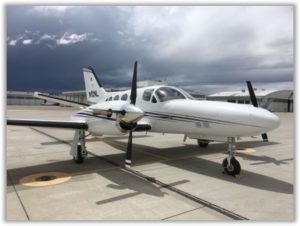
Today, Dave commutes between his homes in Washington state and Sun Valley. Oftentimes, he does so in his own plane (a Cessna Conquest). As he looks back, he recounts that his pilot background and backcountry-skiing knowledge were what led him to the Buffalo Pass crash. Unbeknownst to him, though, it was also his intuition that lead him to Flight 217.
We can’t thank Dave enough for taking the time to share his story with us, and we’d like to wish everyone a very happy holiday season!
